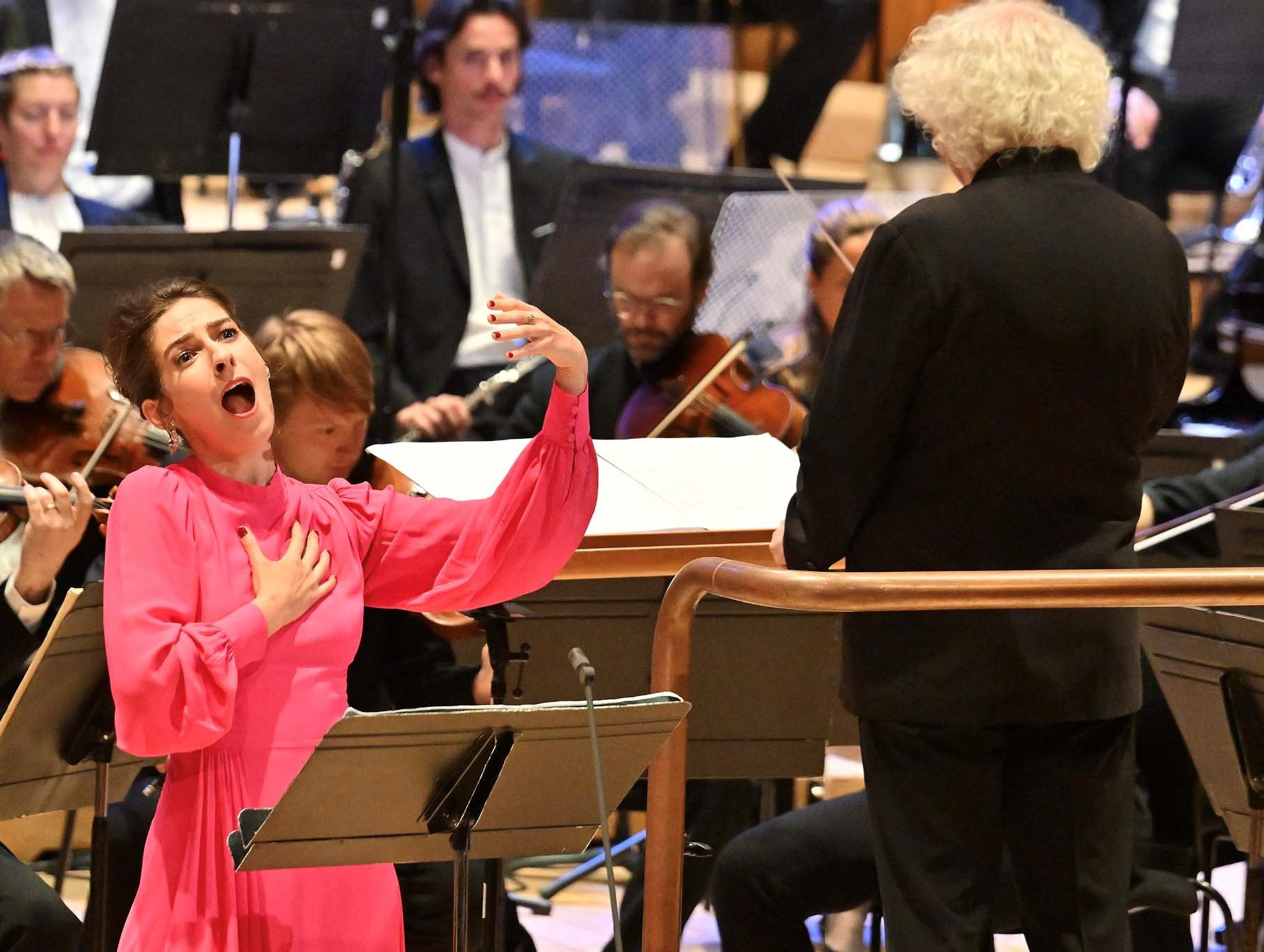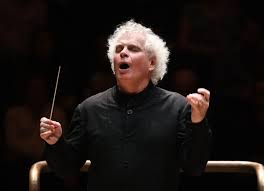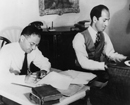Reviews
Simon Rattle's Ecstatic Farewell to the London Symphony O
LONDON—Sir Simon Rattle’s six years at the helm of the London Symphony Orchestra has seen a return to world-beating form following the lumpy and now politically awkward Gergiev era. This June 14 concert at London’s Barbican Centre was a chance to bid a fond farewell as he heads to Munich to take up the reins of the Bavarian Radio Symphony Orchestra. And what a concert it was: Rattle doing what Rattle does best, pouring heart and soul into a signature work alongside a world premiere from a composer whose powers of invention show no sign of slackening at the age of 96.
Betsy Jolas was born in Paris in 1926 to American parents. Although her family returned to the United States in 1940, Jolas headed back to France in 1946 where she studied with Milhaud and Messiaen. After three years as the latter’s assistant at the Paris Conservatoire, she was appointed to the faculty in 1975. Since then, she has combined composition with teaching, both in Europe and the U.S.

Faustine de Monès and Simon Rattle perform Betsy Jolas's Ces belles années with the LSO
Rattle and Jolas hit it off during a chance encounter over dinner in 2014. A new work for the Berlin Philharmonic was the beginning of an Indian Summer for the composer, although the program note claims this new LSO commission will be her final symphonic work. Written for a large and variegated symphony orchestra, Ces belles années is a love letter to the Aix-en-Provence Festival (the work’s co-commissioner turns 75 this year). Jolas was at the first Aix Festival in 1948, so clearly has plenty to draw on.
Brimming with wit and imagination, the 18-minute work opens with bass drum, tam-tam, and an anticipatory cymbal roll. What follows is in loose rondo form held together by a fragmentary figure based on “Happy birthday to you.” It’s an insouciant little earworm, but once you’ve spotted it you can’t help smiling each time it returns. Jolas’s compositional language is all her own, though there are hints of late-Britten, Ives, and especially Alban Berg. It’s colorful too, full of celebratory tubular bells, harp, and vibraphone. The textures remain translucent throughout, as if the reminiscences are being filtered through a haze of seascapes and mist.
There’s much that is fantastical and even fun here, culminating in a theatrical offstage entrance for the soprano soloist (Faustine de Monès, an endearing vision in flowing fuchsia). Approaching the podium with a roguish glance, she invited conductor and orchestra to join her and—singing with crystalline clarity—exhorted us to celebrate “those beautiful days.” Required to clap and stamp on cue, the LSO responded enthusiastically before the work dissolved into bursts of coordinated good-natured laughter from singer and musicians. Rising from her seat in the audience, a sprightly looking Jolas enjoyed several well-deserved and hearty rounds of applause.
Given her close links with Messiaen, the great 20th-century French composer’s Turangalîla-Symphonie made perfect sense in the second half (not to mention it having been a Rattle specialty for decades). The work was written between 1946 and 1948 for a massive orchestra. A Koussevitzky commission for the Boston Symphony Orchestra, it premiered in 1949, conducted by Leonard Bernstein.

With its vast battery of percussion—I counted ten players—as well as four keyboard instruments (piano, Ondes Martenot, celesta, and keyed glockenspiel), Turangalîla is a challenge for any orchestra. Not only does it require razor-sharp discipline, players and conductor need a keen ear for internal balance to bring out the work’s full palette of colors.
This was a powerful, hard-driven reading from Rattle, who drew out the music’s spiky Stravinskian edge and tempered the music’s tendency to assail the ears with a wonderful sense of rubato. The dry Barbican acoustic leant an edge to the sound that was occasionally on the harsh side (one audience member told me on the way out that her Apple watch had alerted her several times to dangerous noise levels), but with the adrenalin in full flow, it hardly seemed to matter.
Both soloists were outstanding. Peter Donohoe was thrilling, throwing off the fiendish and highly percussive piano part. His virtuosic cadenzas were full of drama and his muscular sound cut through the most strident orchestral textures. Cynthia Millar’s Ondes Martenot was occasionally submerged in the flood (the instrument and its speakers were placed stage left, putting the audience on the other side of the auditorium at a certain disadvantage), but she performed the part with elegance and plenty of musical flair.
Conductor and orchestra proved adept at drawing out the music’s chamber-like delicacies in the three “Turangalîla” movements, while muted strings with piano and flute imitating birdsong created a magical effect in the “Garden of the sleep of love” section. But it was the wild energy of the big, jazzy numbers—“Joy of the blood of the stars” and the ecstatic finale—that sent the audience out into a balmy London night with an unmistakable spring in its step.
LSO fans needn’t despair. Rattle remains Conductor Emeritus, returning next year with another installment in the orchestra’s Janácek opera cycle and a new commission from John Adams. The U.K.’s best-known classical music export may be departing these shores, but this memorable evening was a case of thank you and goodbye… for now.
Classical music coverage on Musical America is supported in part by a grant from the Rubin Institute for Music Criticism, the San Francisco Conservatory of Music, and the Ann and Gordon Getty Foundation. Musical America makes all editorial decisions.





 FEATURED JOBS
FEATURED JOBS

 RENT A PHOTO
RENT A PHOTO


